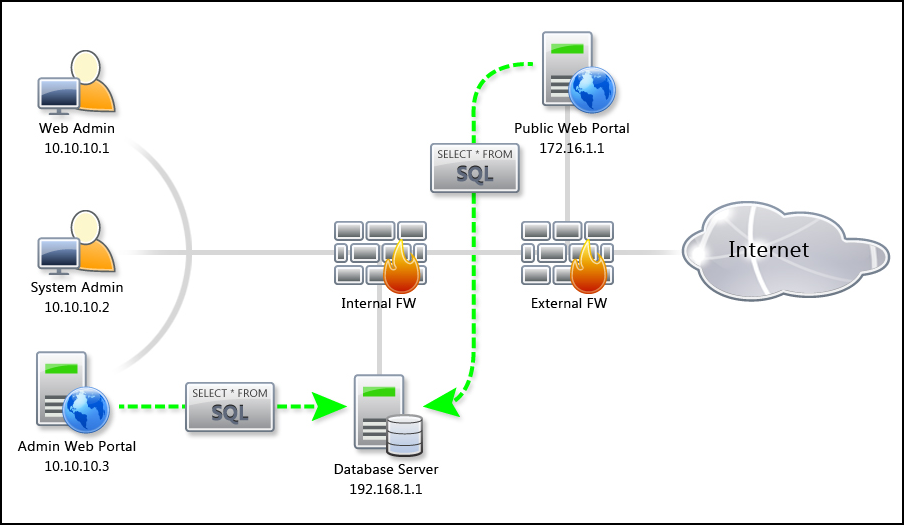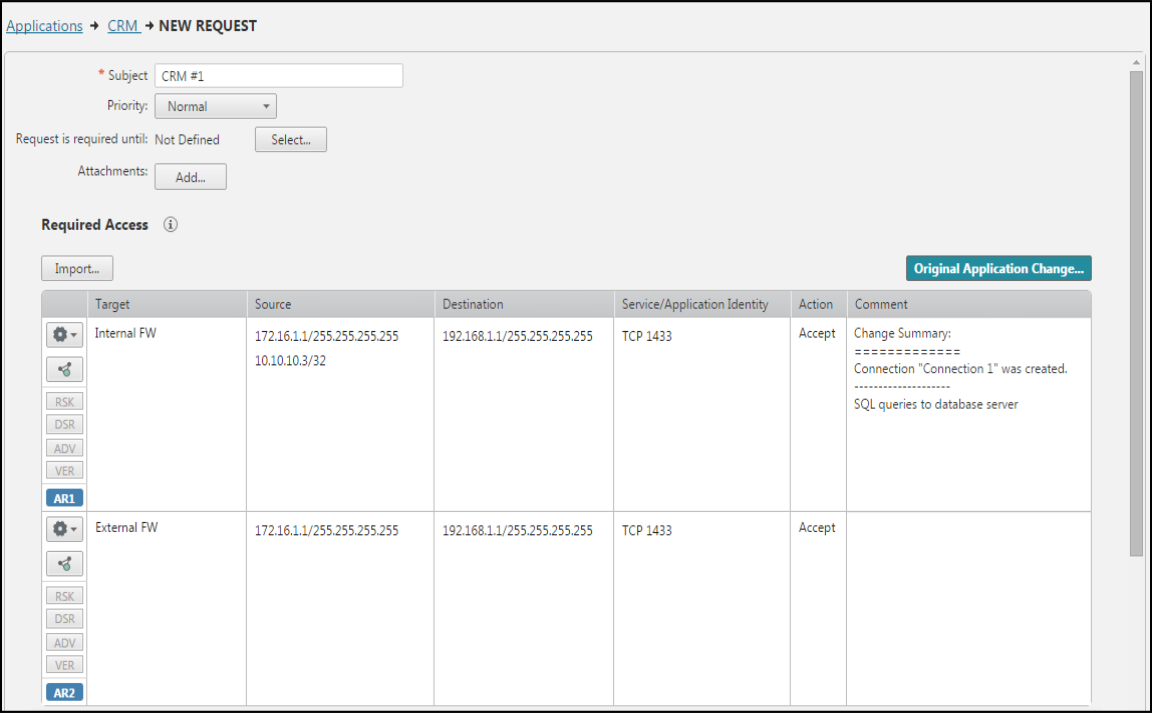On This Page
Example: Web Application
This topic provides a high-level overview of how you can use SecureApp to build connections and monitor traffic in a web application.
Let's say your business generates revenue from a web application that has a portal for public access and a portal for administrative access. The public portal (172.16.1.1) runs on a web server that is located in your DMZ network, and the administration portal (10.10.10.3) runs on a web server that is located in your internal network. Both web servers send queries to a database server (192.168.1.1) that is located in a separate internal segment of your network.

In order to create the security policy rules to allow traffic for this application, you need to add rules to two different firewalls. After you do that, you still need to monitor the rules to make sure that no changes in the security policy rules disrupt the traffic for the application. Because this web application is the core of your business, you cannot afford to have any downtime.
With SecureApp, you can build this connection with the information that you know about the application.

At the click of a button, you can create a SecureChange ticket representing the connectivity changes from SecureApp. Processing the ticket can be partially or fully automated based on your organization's requirements.

SecureApp sends you a notification if the connectivity status of the connection becomes broken, allowing the relevant administrator to handle and mitigate the issue. These connectivity issues are also highlighted within the application.
Was this helpful?
Thank you!
We’d love your feedback
We really appreciate your feedback
Send this page to a colleague
